In the vast expanse of Africa, where the landscapes are as diverse as the cultures that inhabit them, one feature commands attention like no other – its majestic mountains. Among these towering giants, Africa boasts some of the most awe-inspiring peaks on the planet, each with its own unique allure and mystique. Join us as we ascend to new heights and discover the enchanting beauty and profound significance of Africa’s tallest mountains.
Mount Kilimanjaro
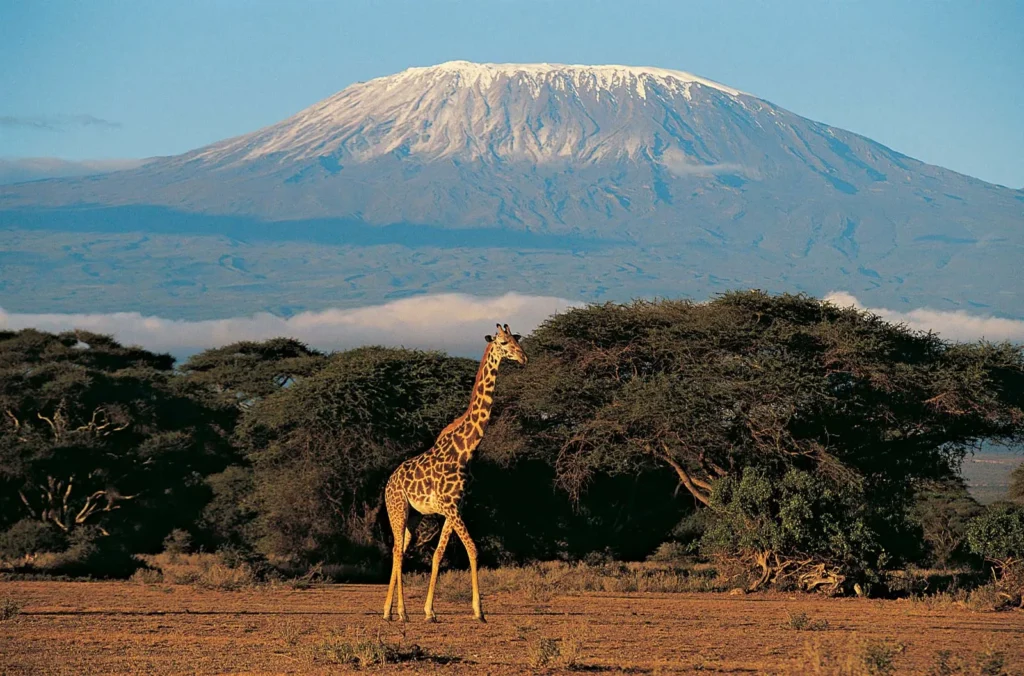
Name: Kilimanjaro, Africa’s Towering Solitary Sentinel
Location: Tanzania
Height: 5,895m/19,341ft
As the highest free-standing mountain in the world, Kilimanjaro’s solitary presence captivates the imagination, drawing adventurers and explorers to its slopes in search of challenge and enlightenment. At the heart of Kilimanjaro lies Kibo, the dormant giant that reaches a staggering height of 5895 meters (19,341 feet) above sea level, making it the pinnacle of African summits. Flanked by the extinct Mawenzi, standing at 4005 meters (13,140 feet), and the also extinct Shira, Kilimanjaro’s profile is an icon of nature’s splendor. The mountain’s unique geography blesses it with two distinct rainy seasons, from March to May and around November, shaping its diverse ecosystems. From the lush rainforests that cloak its lower slopes to the barren alpine desert that crowns its summit, Kilimanjaro boasts five distinct climatic zones, each with its own ecological marvels and challenges.
Conquering Kilamanjaro:
Among the seven official trekking routes, the Rongai route emerges as the gentlest path to Kilimanjaro’s summit, making it ideal for those seeking a less strenuous ascent. With its gradual inclines and well-defined trails, the Rongai route provides trekkers with an opportunity to savor the mountain’s splendor without the technical demands of more challenging routes. Similarly, the Marangu route presents a relatively easy option for climbers, albeit one that is frequently busy due to its popularity. Accommodation along the Marangu route consists of shared huts, offering a comfortable respite for weary travelers after a day’s trek. While the hike from the base to the circular trail is physically taxing, requiring endurance and determination, it does not demand specialized climbing gear, making Kilimanjaro’s summit more attainable for aspiring adventurers.
Mount Kenya
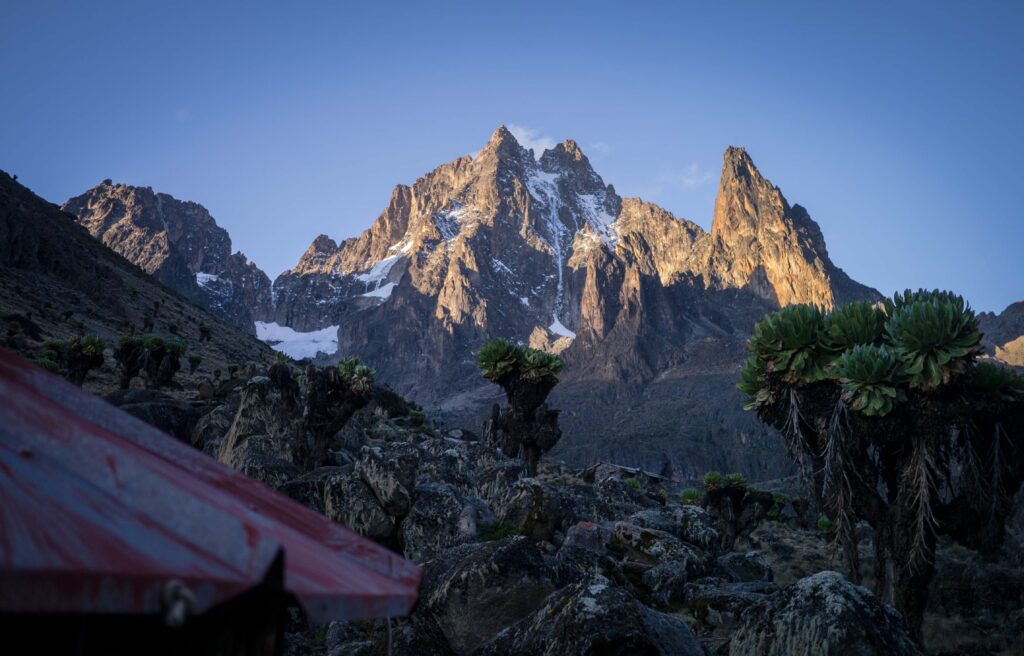
Name: Kenya
Location: Kenya
Height: 5199m/17,057ft
Mount Kenya, the second-highest peak in Africa, is indeed an extinct volcano. Its highest peaks are Batian (5,199 meters or 17,057 feet), Nelion (5,188 meters or 17,021 feet), and Point Lenana (4,985 meters or 16,355 feet). The climate of Mount Kenya varies significantly with altitude, creating distinct belts of ecological communities. Mount Kenya experiences two wet and two dry seasons due to the monsoon. From mid-March to June, the heavy rain season, known as the long rains, occurs, bringing about half of the annual rainfall to the mountain. This is followed by the two dry seasons which lasts until September. October to December marks the short rain period, during which the mountain receives approximately a third of its total rainfall. Finally, from December to mid-March, the drier dry season occurs, when the mountain experiences the least amount of rain.
Hiking Mount Kenya:
There are eight walking routes leading up to the main peaks, with the Chogoria, Naro Moru, and Sirimon routes being the most frequently used and staffed with gates. Other routes require special permission from the Kenya Wildlife Service. The Naro Moru route, popular among trekkers aiming for Point Lenana, can be ascended in three days and features bunkhouses at each camp. The route starts at Naro Moru town, west of the mountain. Accommodations on Mount Kenya range from basic to luxurious. Luxurious lodges, often found on the lower slopes amid the forest, offer hotel-style accommodation with amenities like log fires and hot running water. Many of these lodges also provide guided walks and activities such as fishing and birdwatching. The huts higher up the mountain are more basic, offering bunkrooms with beds, cooking facilities, and communal spaces. Climbing seasons on Mount Kenya are dictated by its proximity to the equator. During the northern summer, rock routes on the north side of the peak are in favorable condition, while ice routes on the south side are optimal. Conversely, this situation reverses during the southern summer.
Mount Stanley
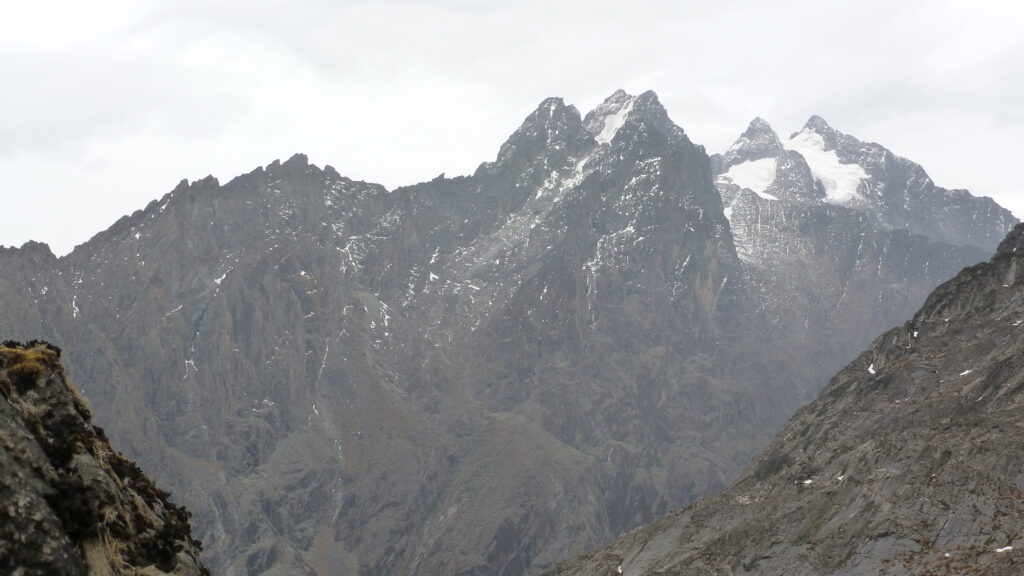
Name: Stanley/Ngaliema
Location: Democratic Republic of Congo and Uganda
Height: 5,109m/16,763ft
Mountain Range: Rwenzori range
Mount Stanley, towering over both the Democratic Republic of Congo and Uganda, reigns as the paramount peak within the Rwenzori Range. Its nine majestic summits include the eminent Margherita Peak, soaring to an impressive 5,109 meters (16,763 feet) above sea level. Following in stature are Alexandra, Albert, Savoia, Ellena, Elizabeth, Phillip, Moebius, and Great Tooth peaks, each contributing to the formidable allure of this mountainous terrain.
Hiking Mt Stanley:
Ascending Mount Stanley poses distinct challenges for trekkers aiming to conquer its highest peaks. Essential climbing gear such as ropes and ice climbing equipment are indispensable, given the presence of formidable crevasses within the ice fields. While various routes lead to Margherita Peak, the Central Circuit stands out as a preferred option. This route traverses grasslands transitioning into rocky peaks, providing trekkers with diverse terrain experiences. Along the journey, overnight stays in mountain huts offer vital rest and acclimatization. Elena Hut serves as a pivotal base from which adventurers embark on the final leg towards the summit of Margherita Peak, navigating through the rugged landscape and overcoming the mountain’s formidable challenges.
Mount Speke
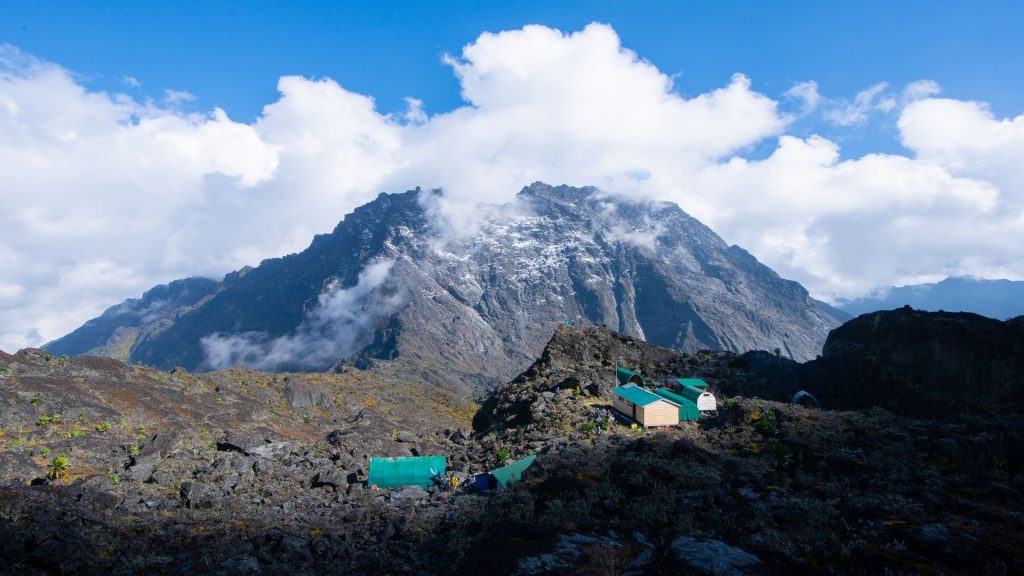
Name: Speke
Location: Uganda
Height: 4,890m/16,043ft
Mountain Range: Rwenzori range
Mount Speke, situated amidst lush landscapes, boasts several significant summits including Vittorio Emanuele at 4,890 meters (16,040 feet), Ensonga at 4,865 meters (15,961 feet), Johnston at 4,834 meters (15,860 feet), and Trident at 4,572 meters (15,000 feet). Blessed with abundant rainfall, the mountain is intricately woven with numerous rivers and streams, nurturing dense vegetation throughout its slopes. This verdant environment provides a habitat for a diverse array of wildlife, including majestic elephants, lively chimpanzees, playful monkeys, stealthy leopards, and graceful antelope, contributing to the rich ecological tapestry of Mount Speke.
Climbing Mount Speke:
The ascent up Vittorio Emanuele initiates from Bjuku Hut, leading trekkers up rocky slopes where the glacier, once prominent, has significantly receded, leaving only sparse patches of ice. Despite the diminished ice, climbers must remain roped up to navigate the steep inclines safely. Situated in a region of the mountains known for substantial rainfall, Mount Speke’s trails become even more challenging to traverse during downpours, further complicating the rocky terrain.
Mount Baker
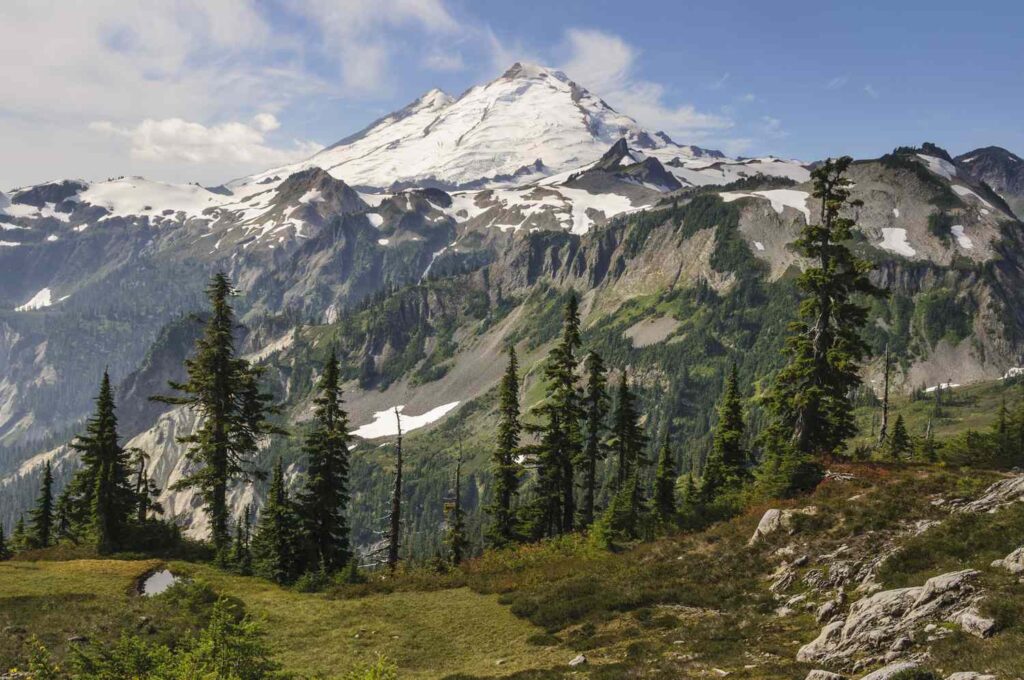
Name: Baker/Kiyanja
Location: Uganda
Height: 4,844m/15,892ft
Mountain Range: Rwenzori Range
Together with Mount Stanley and Mount Speke, Mount Baker completes a triangular formation, enclosing the upper Bujuku Valley within the majestic Rwenzori Range. Characteristic of the peaks in this range, Mount Baker exhibits a rugged landscape marked by multiple jagged summits along its ridge. Among these peaks, the highest is Edward Peak, standing as a testament to the formidable and diverse topography found within the Rwenzori Mountains.
Hiking Mt Baker:
Among the Rwenzori Mountains, Mount Baker stands out as a favorite among climbers, drawing adventurers with its stunning alpine lakes and picturesque trails. The summit, accessible from Hunwick’s Camp, presents a challenging yet rewarding ascent spanning approximately 4.3 kilometers. Climbers typically allocate four to six hours for the ascent, navigating steep and rocky terrain where ropes are indispensable, particularly when traversing numerous crevasses with precipitous drops. During the wet seasons in April-May and September-October, the climb is considered technical due to increased hazards
Mount Emin
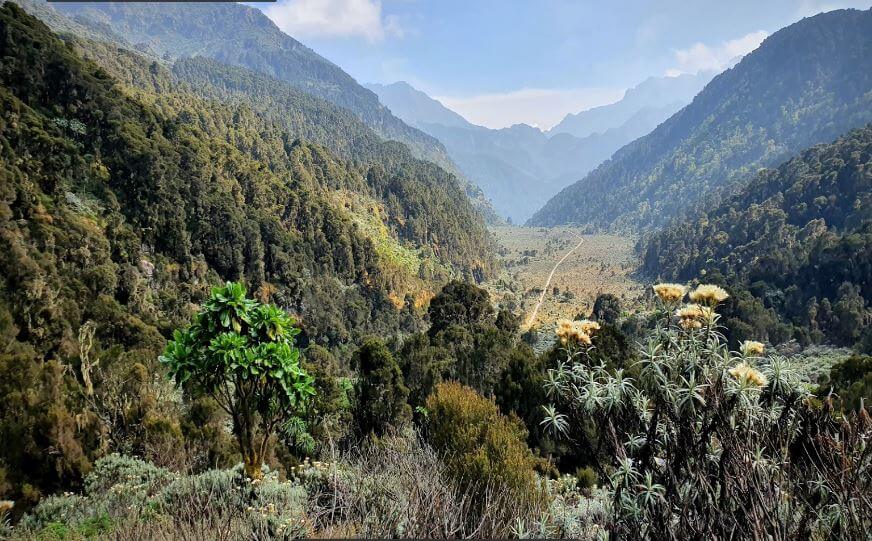
Name: Emin
Location: Democratic Republic of Congo
Height: 4,798m/15,742ft
Mountain Range: Rwenzori Range
Situated on the Democratic Republic of Congo side of the border within the Rwenzori Range, this peak comprises two prominent summits: Umberto and Kraepelin, towering at 4,791 meters (15,720 feet) above sea level. Despite its lack of snow, this strenuous mountain features narrow and rocky ridges, contributing to its reputation as the fourth highest peak in the Rwenzori Range and the sixth highest in Africa.
Hiking Mt Emin:
The Rwenzori Mountain Range offers trekking opportunities throughout the year, although the optimal time for hiking is during the drier months of January, February, June, July, and August when rainfall is less frequent. Treks to Mount Emin typically entail shorter durations compared to ascents of Mount Stanley, Mount Speke, and Mount Baker. Climbers venturing to Mount Emin are advised to come prepared with class 5 climbing gear, including ropes, crampons, and protective equipment, essential for safeguarding against potential falls that could prove fatal. The rugged and challenging terrain of the Rwenzori Mountains demands careful preparation and adherence to safety protocols to ensure a successful and secure climbing experience.
Mount Gessi
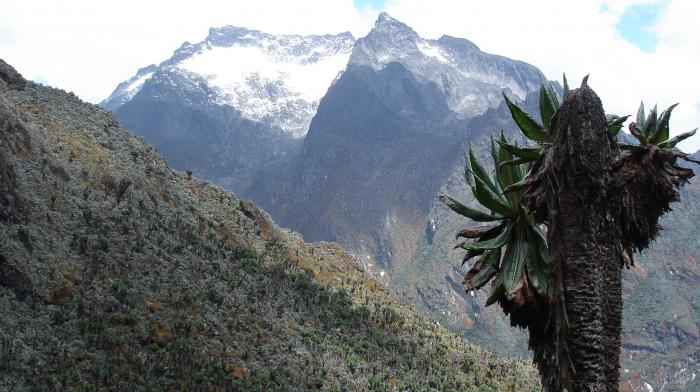
Name: Gessi
Location: Uganda
Height: 4,715m/15,469ft
Mountain Range: Rwenzori Mountain Range
Mount Gessi, the sister mountain to Mount Emin in the Rwenzori Range, shares a geographical connection with its counterpart. The two are divided by a deep and narrow valley that runs in a north-south direction. While Mount Gessi is positioned on the Uganda side of the valley, Mount Emin is located on the Democratic Republic of Congo side. Mount Gessi itself is characterized by twin peaks named Lolanda, standing at 15,470 feet, and Bottego, with an elevation of 15,418 feet. This mountainous duo contributes to the diverse and captivating landscape of the Rwenzori Range, offering an enticing destination for exploration and trekking enthusiasts.
Hiking Mt Gessi:
The trekking journey to Mount Gessi commences from Mugusu Valley, winding through dense forests that blanket the lower slopes. As trekkers ascend, they traverse towards Roccato Pass, navigating through thick brush and rocky slabs that characterize the landscape. Beyond Roccato Pass, the trail leads to the ridge situated between the two prominent peaks of the mountain. It is worth noting that historical evidence suggests that Mount Gessi was once shrouded in glaciers, which have since receded over time, leaving behind remnants of their presence.
Mount Meru
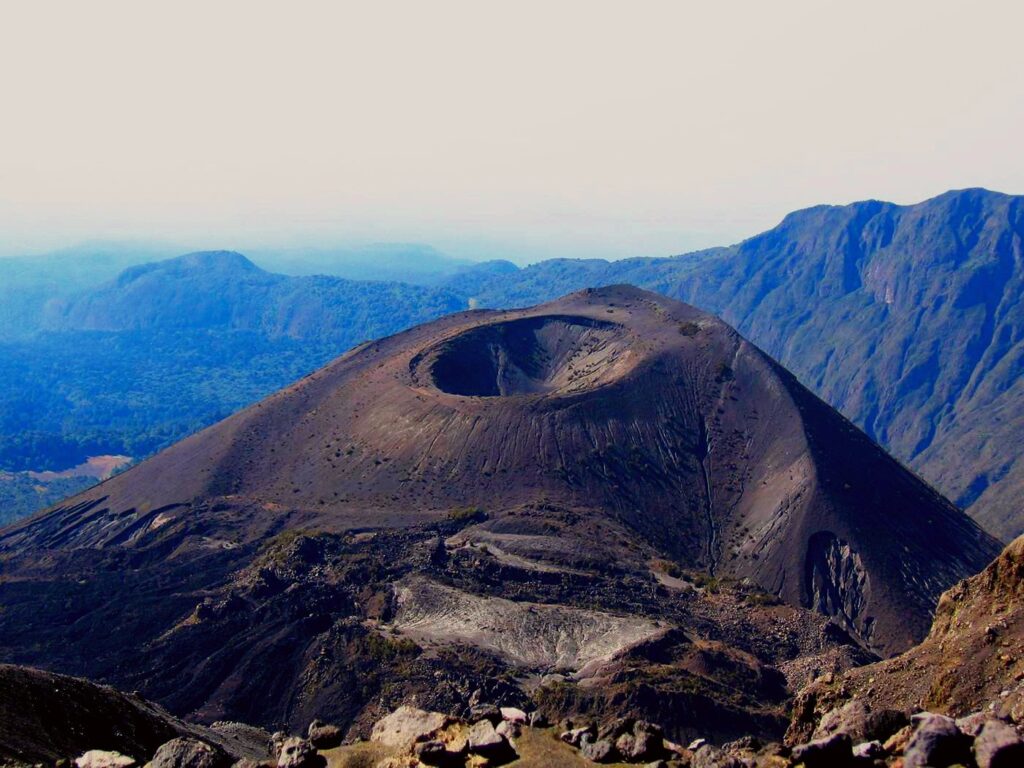
Name: Mt Meru
Location: Tanzania
Height: 4,562m/14,980ft
Mountain Range: Free Standing
Popular among mountain climbers as an acclimatization trek before ascending its renowned neighbor, Mount Meru stands as a breathtaking destination in its own regard. Situated within Arusha National Park in northern Tanzania, Mount Meru offers a diverse landscape for exploration. Its lower slopes, adorned with lush rainforests, envelop climbers in verdant foliage up to 9,500 feet (2,900 meters). As the ascent continues, the terrain transitions into more rugged, rocky features typical of volcanic mountains. Those who conquer the summit, known as Socialist Peak, are greeted with a spectacular vista of the volcano’s crater, a rewarding finale to the challenging journey.
Hiking Mt Meru:
Mount Meru, although over 1000 meters lower than Kilimanjaro, serves as an ideal option for acclimatization hikes. Yet, it commands respect in its own right, offering a challenging trek that shouldn’t be underestimated. Unlike Kilimanjaro, Mount Meru presents a steeper ascent and traverses along an exposed, barren ridge, complete with via ferrata sections that add an extra layer of difficulty. Climbers ascend through various climatic zones, including grassland, forest, and the high altitude desert zone.
Ras Dashen
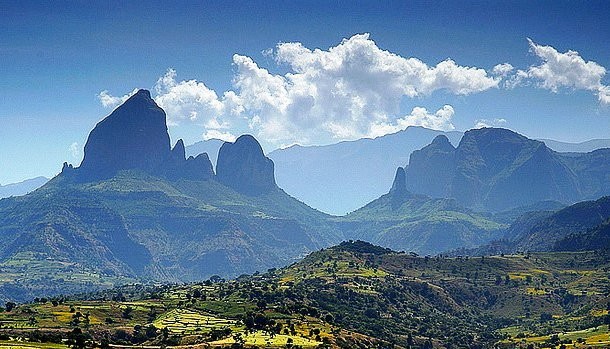
Name: Ras Dashen/ Ras Dejen
Location: Ethiopia
Height: 4,533m/14,872ft
Mountain Range: The Simien Mountains
Ras Dashen, alternatively known as Ras Dejen, proudly stands as the highest mountain within the Simien Mountains and holds the distinction of being Ethiopia’s tallest peak. Its remarkable features include imposing rock cliffs and rugged peaks, creating a striking visual contrast against the deep valleys that lie adjacent. Within the park where Ras Dashen resides, an array of rare and unique wildlife finds sanctuary. Among these inhabitants are the Gelada baboon, known for its distinctive appearance and social behaviors, the elusive Simien fox, and the Walia ibex, a species of goat found exclusively within this region of the world
Hiking Ras Dashen:
Hiking to the summit of Mount Ras Dejen demands a good level of fitness and overall health, but it doesn’t necessitate technical climbing skills. The ascent from the base to the summit is achievable within half a day with a steady pace, making it accessible to determined hikers
Mount Karisimbi
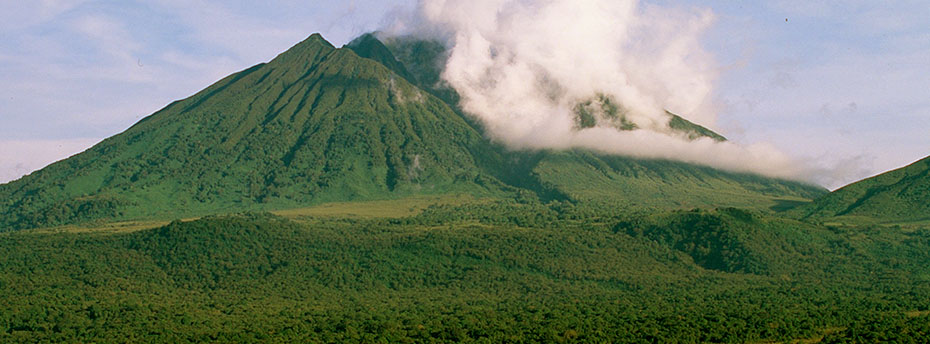
Name: karisimbi
Location: Democratic Republic of Congo and Rwanda
Height:4,507m/14,787ft
Mountain Range: Virunga Mountains
The Virunga Mountains, characterized by their volcanic origins, are home to Mount Karisimbi, the tallest among them. Situated within Volcanoes National Park, Mount Karisimbi is renowned for its towering presence and majestic beauty. The park itself is globally celebrated for its population of mountain gorillas, which inhabit the dense alpine forests that blanket the slopes of Mount Karisimbi and its neighboring peaks. This unique ecosystem, teeming with biodiversity, offers visitors the rare opportunity to witness these critically endangered primates in their natural habitat, making Volcanoes National Park and Mount Karisimbi iconic destinations for wildlife enthusiasts and conservationists alike.
Hiking Mt Karisimbi:
Ascending to the summit of Mount Karisimbi typically requires a two- to three-day journey. Adding a gorilla trek to the expedition presents a once-in-a-lifetime opportunity to encounter mountain gorillas up close in their natural habitat. These gorillas are distinct from the lowland gorillas often seen in zoos
In Conclusion, Whether scaling their heights, embarking on wildlife safaris, or simply marveling at their grandeur from afar, exploring Africa’s highest peaks offers a profound appreciation for the untamed beauty and enduring resilience of the continent’s landscapes


